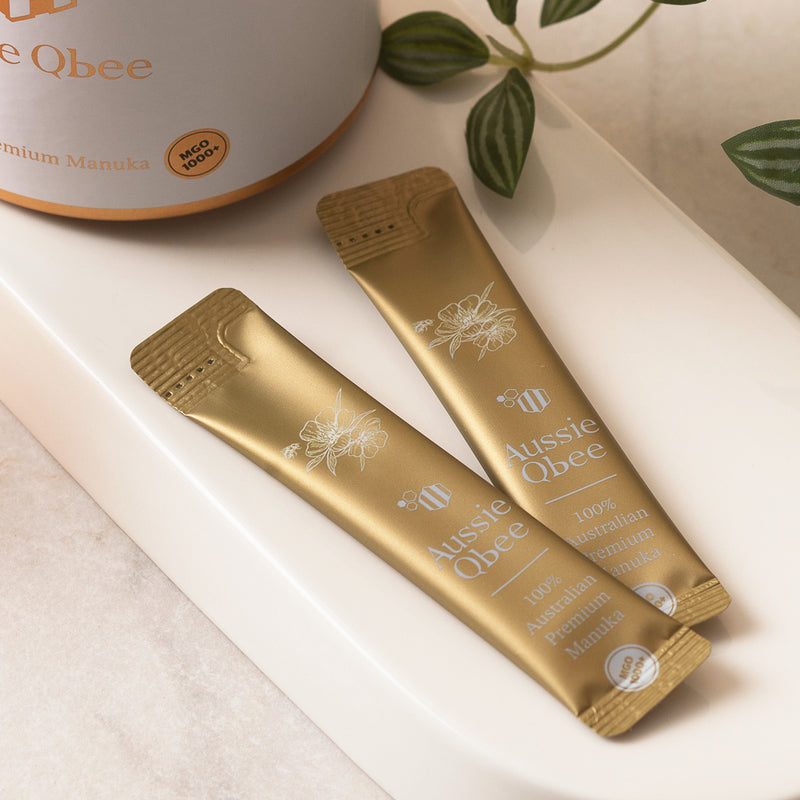- Regular
- $19.99
- Sale
- $19.99
- Regular
- $19.99
- Unit Price
- per

Manuka honey is produced by bees that pollinate the Manuka bush (Leptospermum scoparium), native to Australia. What sets Manuka honey apart from regular honey is its high concentration of methylglyoxal (MGO), a compound known for its potent antibacterial properties. This unique characteristic is what drives the grading system for Manuka honey.

Manuka honey is graded based on its MGO content and another factor known as the Unique Manuka Factor (UMF). The UMF grading system is internationally recognized and ensures that the honey meets stringent quality standards. Here’s a breakdown of what these numbers mean:
MGO Rating: The MGO rating indicates the concentration of methylglyoxal in the honey. Higher MGO ratings suggest stronger antibacterial properties.
MGO 150+: Suitable for everyday use as a natural sweetener and general health maintenance.
MGO 300+: Offers enhanced antibacterial properties, ideal for boosting immune support and treating minor ailments.
MGO 600+: High-grade Manuka honey used for more potent therapeutic applications, including skin treatments and digestive health.
MGO 1000+: Ultra-high-grade honey for serious medicinal purposes, often recommended for severe infections or health conditions.
UMF Rating: The UMF rating is a comprehensive measure that includes MGO levels, as well as other beneficial compounds like leptosperin and DHA (dihydroxyacetone). The UMF certification guarantees the honey’s authenticity and potency.
UMF 5+ to 10+: Good for daily consumption and as a health supplement.
UMF 10+ to 15+: Offers stronger antibacterial effects, suitable for treating minor wounds and infections.
UMF 15+ to 20+: Higher therapeutic grade, effective for more serious health issues, including skin conditions and digestive problems.
UMF 20+ and above: Premium grade Manuka honey with maximum potency, used for severe health concerns and intensive healing purposes.
When selecting Manuka honey, consider what you intend to use it for:
Ensuring Authenticity When purchasing Manuka honey, it’s crucial to ensure you’re getting genuine, high-quality honey. Look for the MGO certification on the label, which verifies that the honey meets the stringent standards set by the Australian Manuka Honey Association(a.k.a AMHA). Additionally, reputable brands often provide traceability information, allowing you to verify the honey’s origin and quality. Conclusion Understanding the different grades of Manuka honey can significantly impact your health and wellness journey.
Whether you’re looking for a natural sweetener, a daily health supplement, or a potent therapeutic agent, there’s a Manuka honey grade that’s perfect for you. By choosing the right grade and ensuring its authenticity, you can fully reap the benefits of this extraordinary natural product.